Tabletop TR-MOKE System
From FMR to Spinwaves up to the THz regime
Our tabletop TR-MOKE System is designed for advanced research in magneto-optical phenomena. With its state-of-the-art technology, this system offers sub-picosecond time resolution, allowing researchers to explore the intricate dynamics of magnetic materials. The compact design makes it suitable for various laboratory environments, providing flexibility without compromising performance. Equipped with user-friendly software, data acquisition becomes seamless, enabling scientists to focus on their experiments rather than technical hurdles. Enhance your research capabilities with this cutting-edge instrument, which is ideal for both academic and industrial applications.
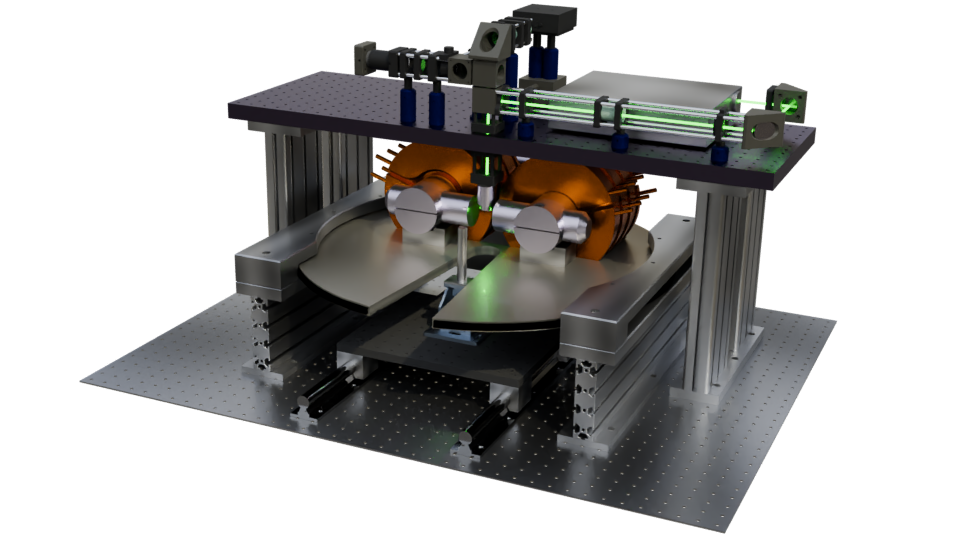
Specifications
- Spatial Resolution < 350 nm
- Temporal Resolution < 500 fs
- Magnetic Field Range > 500 mT
- Magnetic Field Angle: 360 °
- Individual Laser Sources
- Individual rf-Sources
- Individual Magnetic Fields
- User-Friendly Software
- Low Temperature Option
- Galvo-Galvo Option
The choice of laser wavelength and repetition rate is critical in time-resolved magneto-optical Kerr effect (TR-MOKE) experiments, as these parameters directly influence the spatial resolution, signal sensitivity and time window of your measurements. To ensure optimal performance across diverse experimental requirements, we propose a range of femtosecond laser sources.
For experiments operating in the lower GHz frequency range, we also propose picosecond laser sources as a flexible and low cost alternative to femtosecond systems.
Our standard systems provide 800 nm (400 nm via second harmonic generation, SHG) and 1040 nm (520 nm SHG) femtosecond laser pulses. Repetition rates can be customized from 1 MHz up to 100 MHz, enabling both high-resolution temporal measurements and high-throughput data acquisition. Pulse energies of up to 100 nJ are available, with further options depending on your configuration needs.
We understand that each research application is unique. Whether you’re optimizing for magnetic dynamics, fluence thresholds, or synchronization with external devices, we’ll help you configure the ideal laser solution.
- Standard Lasers:
- 1040 nm and 520 nm (via SHG)
- 800 nm and 400 nm (via SHG)
- Repetition rates: 1 MHz – 100 MHz
- Pulse energy: up to 100 nJ (higher energies on request)
Get in touch with us to discuss a custom laser configuration tailored to your experimental setup.
Precise control of radio frequency (RF) signals is essential for investigating magnetization dynamics in TR-MOKE and ferromagnetic resonance (FMR) experiments. The frequency of the RF excitation determines the dynamic regime of magnetic precession, allowing researchers to probe phenomena such as damping, anisotropy, and spin-wave behavior with high temporal and spectral resolution.
To support a broad range of experimental needs, we propose high-performance RF sources with frequency ranges up to 67 GHz. These sources enable excitation of magnetic systems across the full spectrum of technologically and scientifically relevant frequencies—from low-GHz FMR studies to high-frequency spin dynamics.
Get in touch with us to discuss your specific needs.

Electromagnet options
Our setups include standard electromagnets designed to meet the precise demands of advanced magnetization experiments. Our systems deliver in-plane magnetic fields exceeding 1 Tesla, offering exceptional field strength and stability for dynamic magnetic studies. Out-of-plane magnetic fields can be offered upon request.
For in-plane magnetic fields, we offer 360° field rotation, enabling full angular control without repositioning the sample—ideal for anisotropy and angular-dependent measurements. To ensure thermal stability during high-field operation, our magnets are equipped with efficient water-cooling systems.
Both unipolar and bipolar power supplies are available to support your specific experimental requirements, offering fine control over field direction and amplitude.
Get in touch with us to discuss your specific needs.
explore TR-MOKE
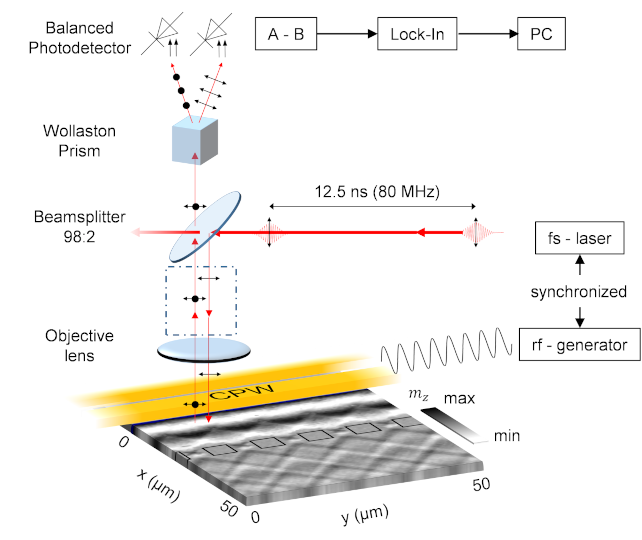
Schematic overview of a standard TR-MOKE setup. Femtosecond laser pulses are used for stroboscopic measurement of coherently excited spin waves. A galvo-galvo unit can be used for scanning the laser pulses across the sample surface (placed at the position marked by the dashed rectangle). Alternatively, the sample can be moved via a xyz piezo scanning stage to scan the sample surface with respect to the laser focus. Both systems are offered by CRI²SPIN.
https://nbn-resolving.org/urn:nbn:de:bvb:91-diss-20230324-1693644-1-1
TR-MOKE user software with example data for topographic signal (measurement in progress). Automatic result report pdf file can be created to achieve “Labbook-ready” documentation.
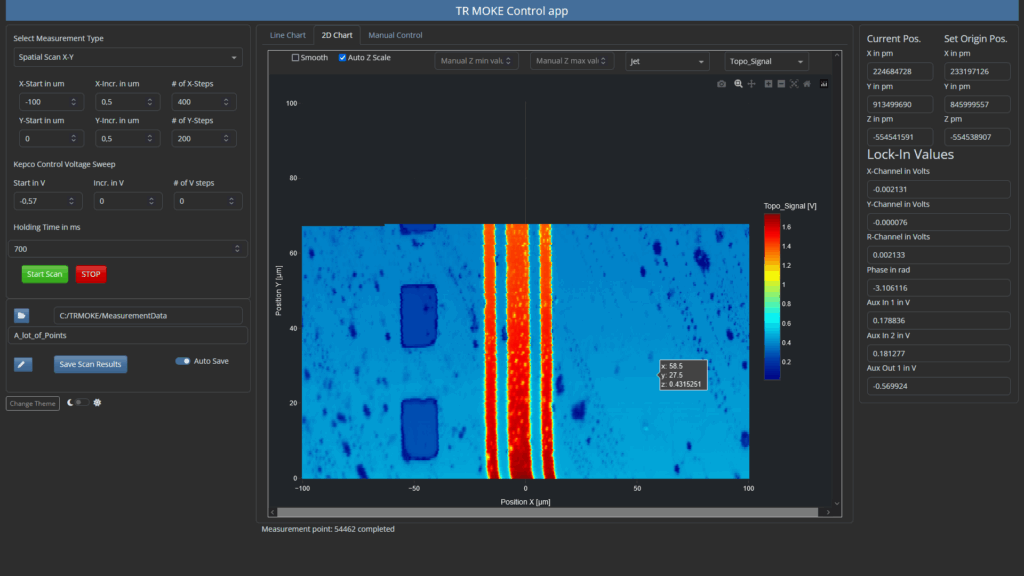
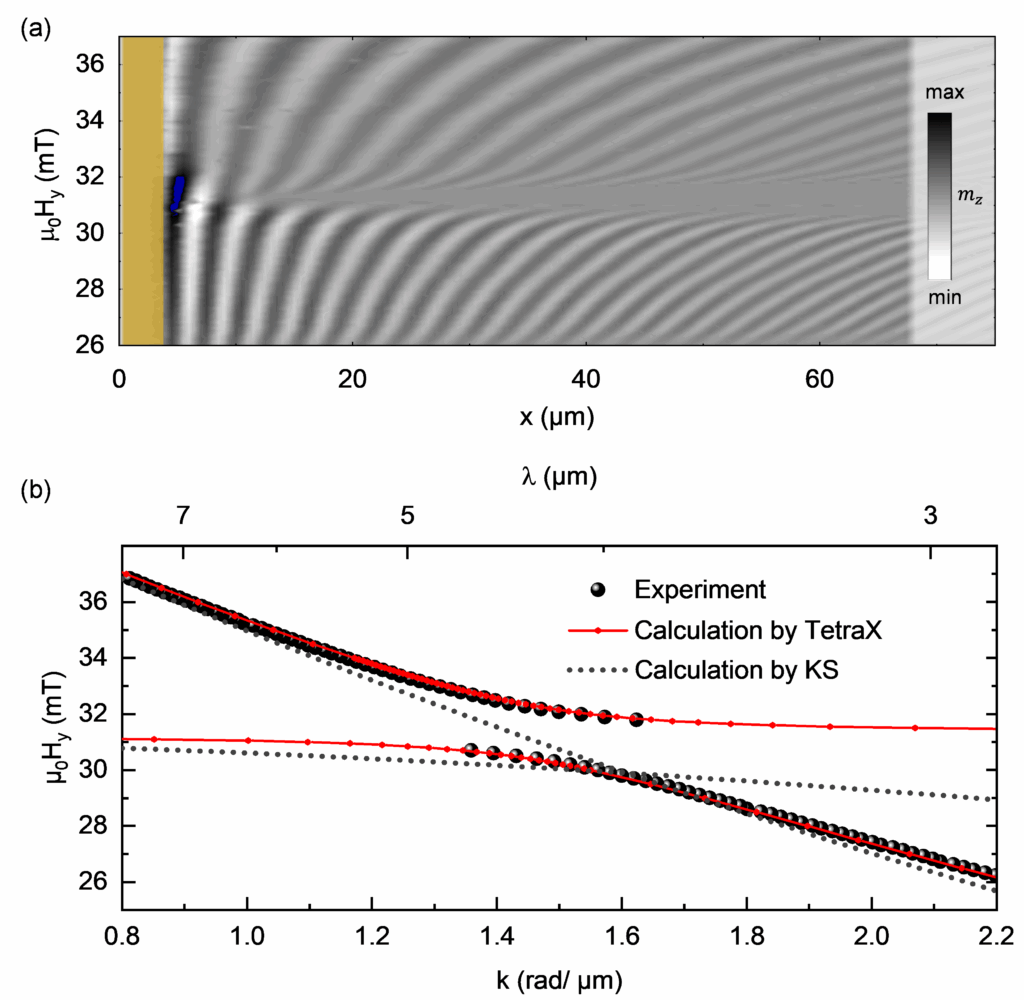
(a) Spin wave propagation as a function of the external magnetic field. An area with high attenuation is observed around 31 mT.
(b) Black spheres show the extracted k-values from TR-MOKE measurements presented in (a). The dispersion relation calculated using TetraX (red symbol-line) is in good agreement with the experimental data, whereas the calculation using the zeroth order perturbation theory from Kalinikos and Slavin (KS) does not give the proper solution in the vicinity of the hybridization.
https://nbn-resolving.org/urn:nbn:de:bvb:91-diss-20230324-1693644-1-1
TR-MOKE measurement of a plane spin wave propagating
through a diffraction grating, indicated by the black squares.(a) Caustic-like spin wave beams are emitted from a point like source at the diffraction grating in both, the positive and negative x-direction.
(b) Corresponding 2D FFT of the region behind the diffraction grating (x > 0) representing the emitted wave-vectors in both, x- and y-direction.
C. Riedel et al., (2023), Adv. Phys. Res., 2: 2200104
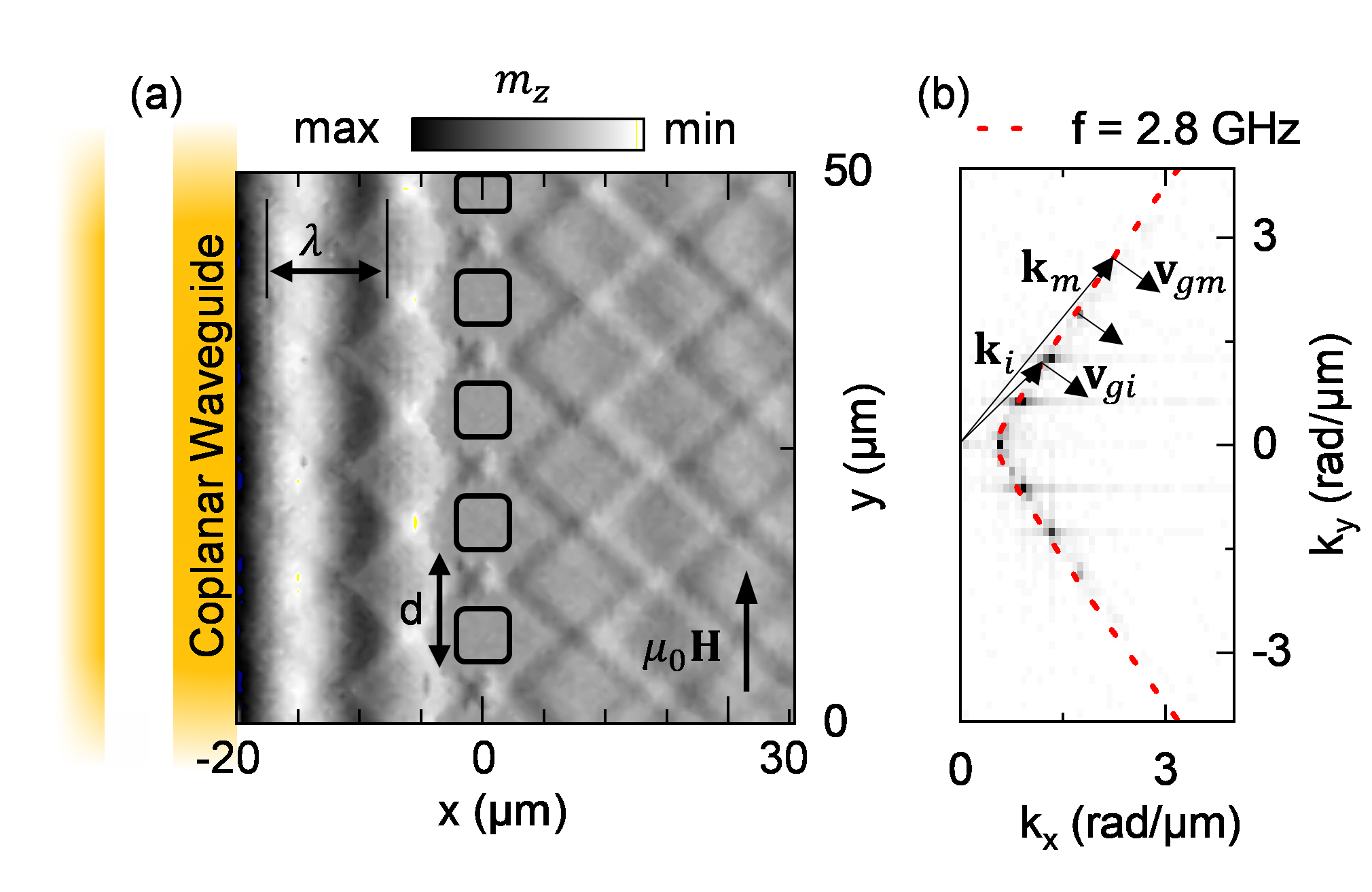
Let’s talk
We would love to hear from you!


